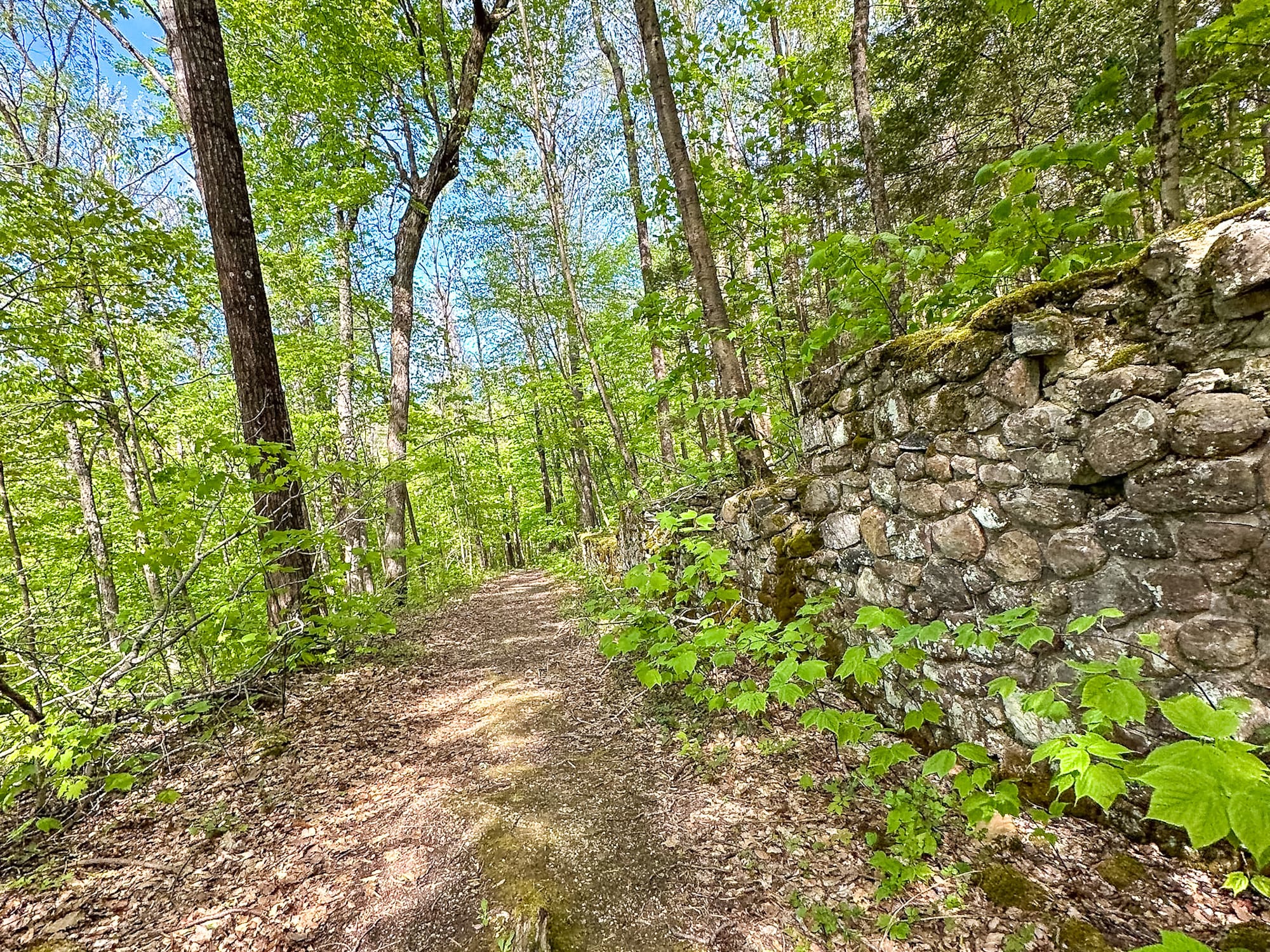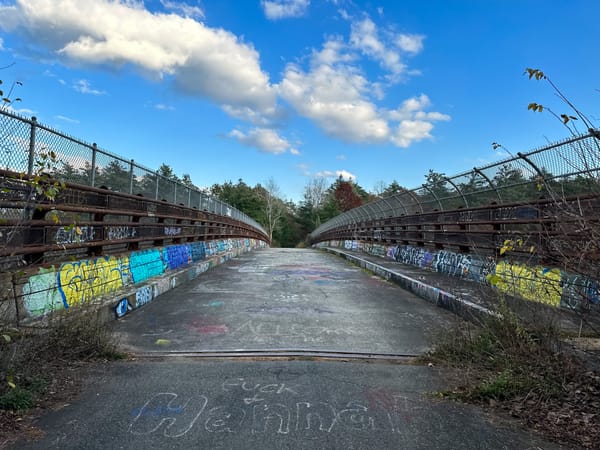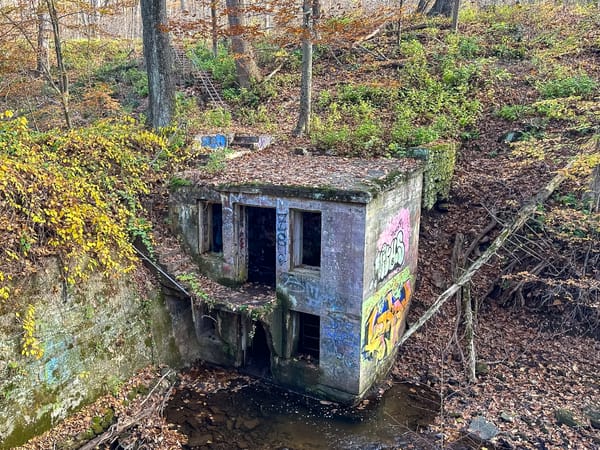Ashintully Mansion Ruins (Tyringham, MA)
Discover the haunting ruins of the Ashintully Mansion in Tyringham, Massachusetts - once a grand 35-room “Marble Palace,” destroyed by fire in 1952 and now one of New England’s most captivating historic ruins.
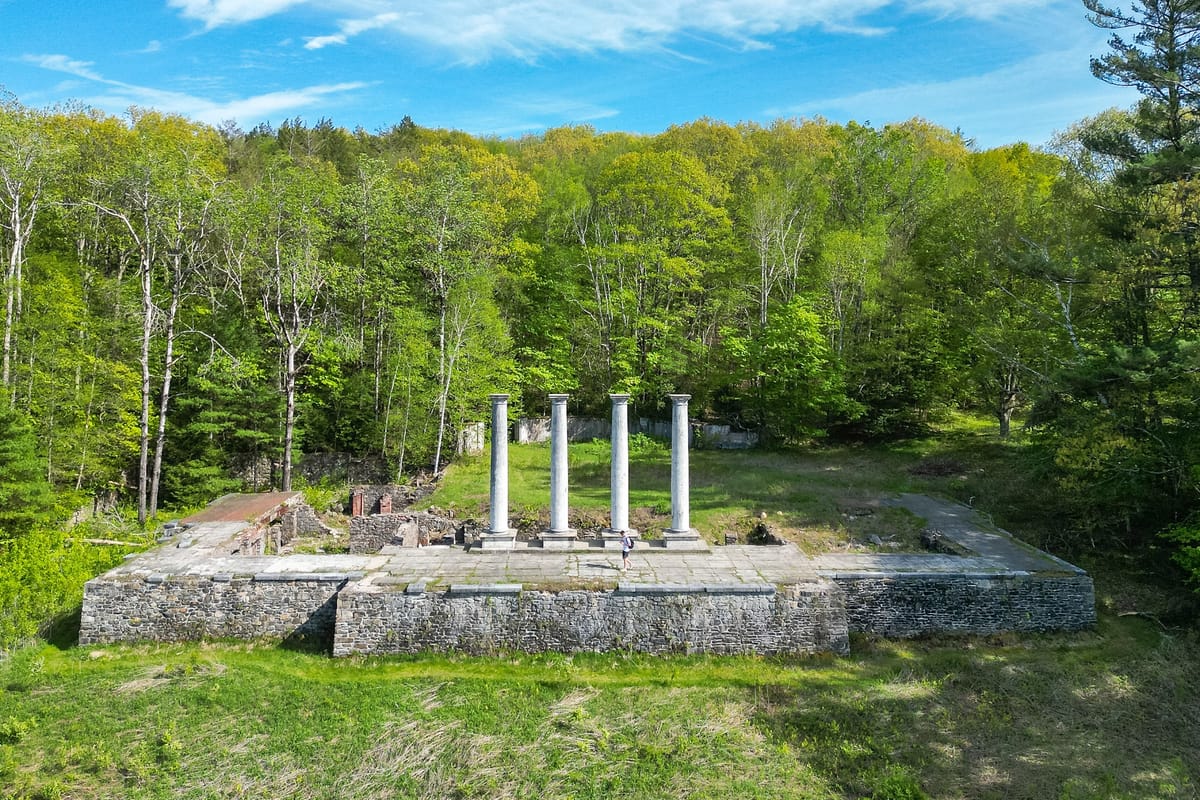
Tucked away in the quiet hills of Tyringham, Massachusetts, the Ashintully Mansion Ruins — also known as the Tytus Mansion — stand as one of New England’s most fascinating and tragic relics. Once a lavish 35-room estate known as the Marble Palace, the mansion met its fiery end in 1952, leaving behind towering stone columns and ghostly remnants of an era long gone.
Today, visitors to Ashintully Gardens can walk among these haunting ruins, surrounded by lush landscapes and the sounds of nature — a striking contrast to the grandeur that once stood here.

The History Behind Ashintully
The story of Ashintully begins with Robb de Peyster Tytus and his wife, Grace Seeley Henop Tytus, New York intellectuals who discovered Tyringham during their honeymoon and fell in love with the Berkshire hills. Enchanted by the landscape, they created a 1,500-acre estate and began construction on their dream home in 1910.
Tytus, a Yale graduate and accomplished archaeologist, had worked on excavations in Egypt where he helped uncover the palace of King Amenhotep III. Returning to Massachusetts, he poured his creativity and passion for history into Ashintully — named after his family’s ancestral Scottish estate.
Despite being called the Marble Palace, the home was actually constructed of stucco mixed with white sand, giving it the shimmering illusion of marble. Completed in 1912, it became one of the most remarkable country houses in the Berkshires.

Inside the Marble Palace
The mansion was designed for both comfort and culture. It featured:
- 🏛 A two-story library and music room filled with rare volumes and instruments
- 🍽 A formal dining room and drawing room for entertaining
- 🌄 A grand terrace overlooking the Tyringham valley
- 🛏 Bedrooms and baths on the upper floor
- 🍳 A full kitchen and staff quarters in the basement
The Tytuses adorned the interior with treasures from their travels — Egyptian artifacts, a Jacobite cup said to have belonged to Bonnie Prince Charlie, and a vast collection of Irish amethyst glass and Waterford crystal.
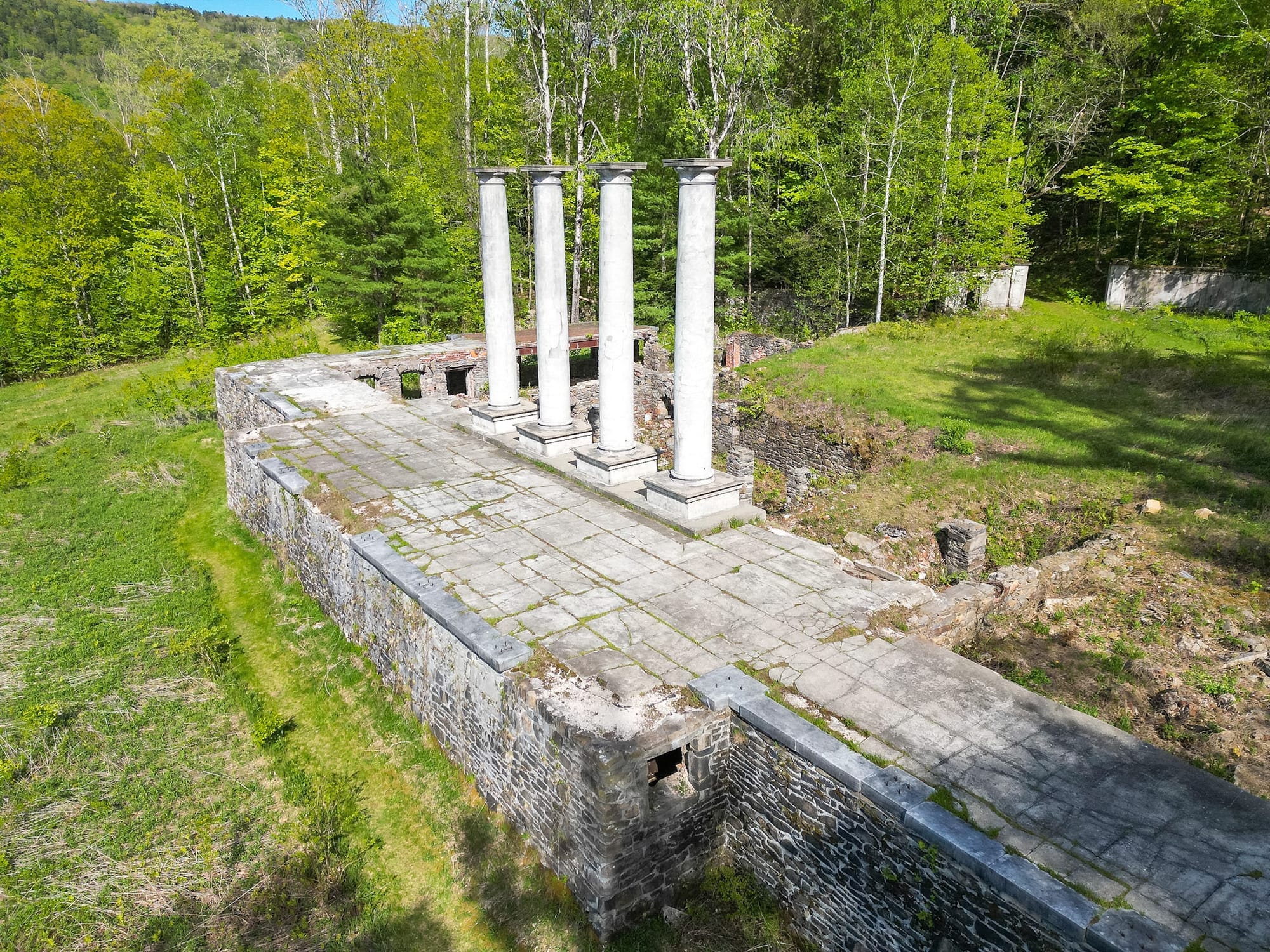
Tragedy Strikes the Tytus Family
Life at Ashintully was both cultured and tumultuous. In 1913, just a year after the mansion’s completion, Robb Tytus passed away, leaving Grace to manage the estate with their two daughters, Mildred and Victoria.
Grace later remarried but divorced in 1927. During this period, she rented the mansion to Henry Adams, the great-grandson of President John Adams. Adams reportedly experienced a chilling incident while staying there — a portrait of an Italian noblewoman in the house allegedly “spoke” to him, adding an eerie layer to the estate’s legend.
Misfortune continued to follow the family. In 1928, Grace fell and broke her hip at the mansion and died shortly after from a heart attack. In 1933, her daughter Mildred fell asleep while driving home from Tyringham and was killed in the resulting crash.

The Fire of 1952
The estate eventually passed to Victoria Tytus Coolidge, who sold it in 1937, removing the last of the family’s furnishings and treasures. The property was later purchased by John S. McLennan Jr., Grace’s half-brother, and his wife Katharine.
On a windy day in April 1952, Katharine burned debris in a small incinerator near the house. A gust carried sparks into the nearby fields, igniting a devastating fire that burned over 600 acres of woodland and completely destroyed Ashintully. Only the foundation and four Doric columns survived — ghostly sentinels marking where the mansion once stood.
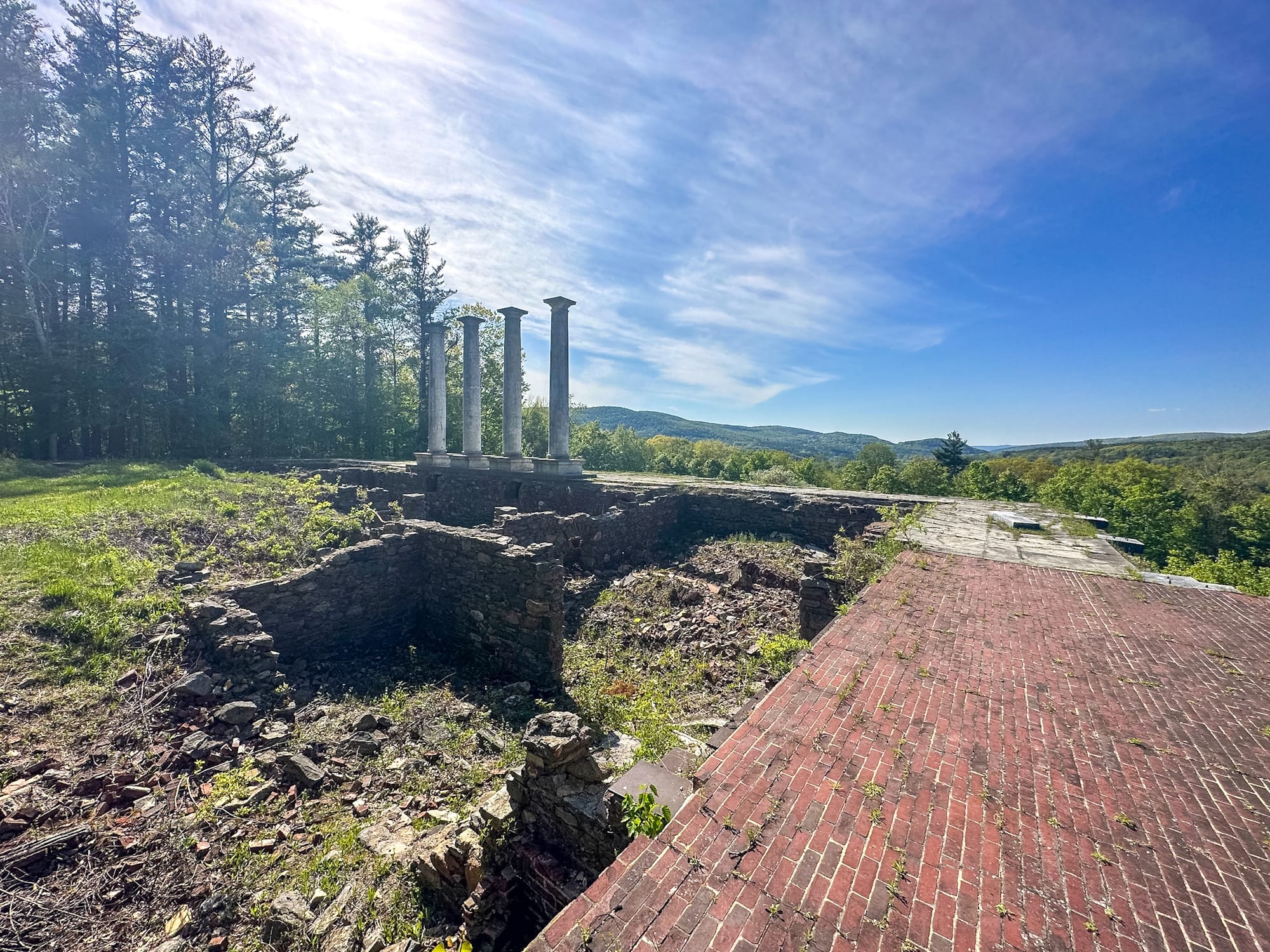
Rebirth as a Sanctuary
After the fire, John and Katharine McLennan relocated to a nearby farmhouse and continued to care for the property. Together, they created Ashintully Gardens, an elegant series of landscaped gardens inspired by classical and modern design.
When John McLennan — a composer and musician — passed away in 1996, he donated the property to The Trustees of Reservations, ensuring it would remain open to the public. Today, visitors can wander the gardens, admire the breathtaking views, and visit the Ashintully Mansion Ruins, where the four surviving columns rise dramatically from the hillside.
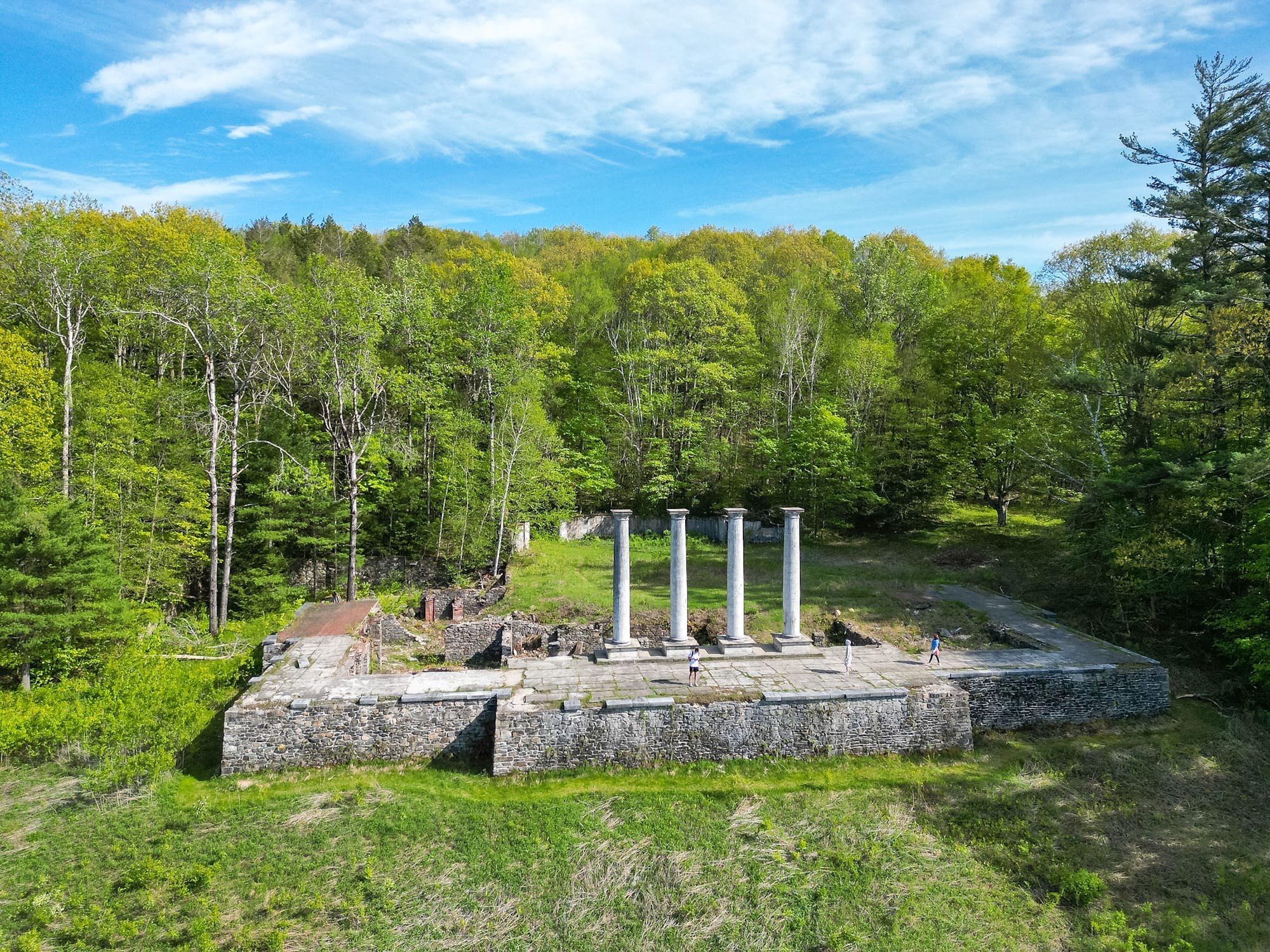
Visiting the Ashintully Mansion Ruins
Exploring the ruins is an easy and peaceful walk suitable for all visitors.
- 📍 Address: Sodom Road, Tyringham, Massachusetts
- 🌐 GPS Coordinates: 42.213278, -73.173833
- 🚶 Trail Length: 0.7 miles (loop)
- ⏱ Hike Time: 25–30 minutes
- ⛰ Elevation Gain: 148 feet
- 🌿 Difficulty: Easy
- 🐕 Dog Policy: Dogs are not allowed on the trail or property
- 🅿️ Parking: Small dirt parking area along Sodom Road; parking is free
The ruins and gardens are managed by The Trustees of Reservations and are open seasonally, typically from spring through fall.

Quick Facts
- 🏗 Construction Began: 1910
- 🏛 Completed: 1912
- 🔥 Destroyed by Fire: 1952
- 🧱 Style: Stucco “Marble Palace” with Doric columns
- 🧭 Original Estate Size: 1,500 acres
- 🎵 Later Owner: John S. McLennan Jr., composer
- 🌷 Current Owner: The Trustees of Reservations
- 📍 Public Access: Ashintully Gardens (Tyringham, MA)
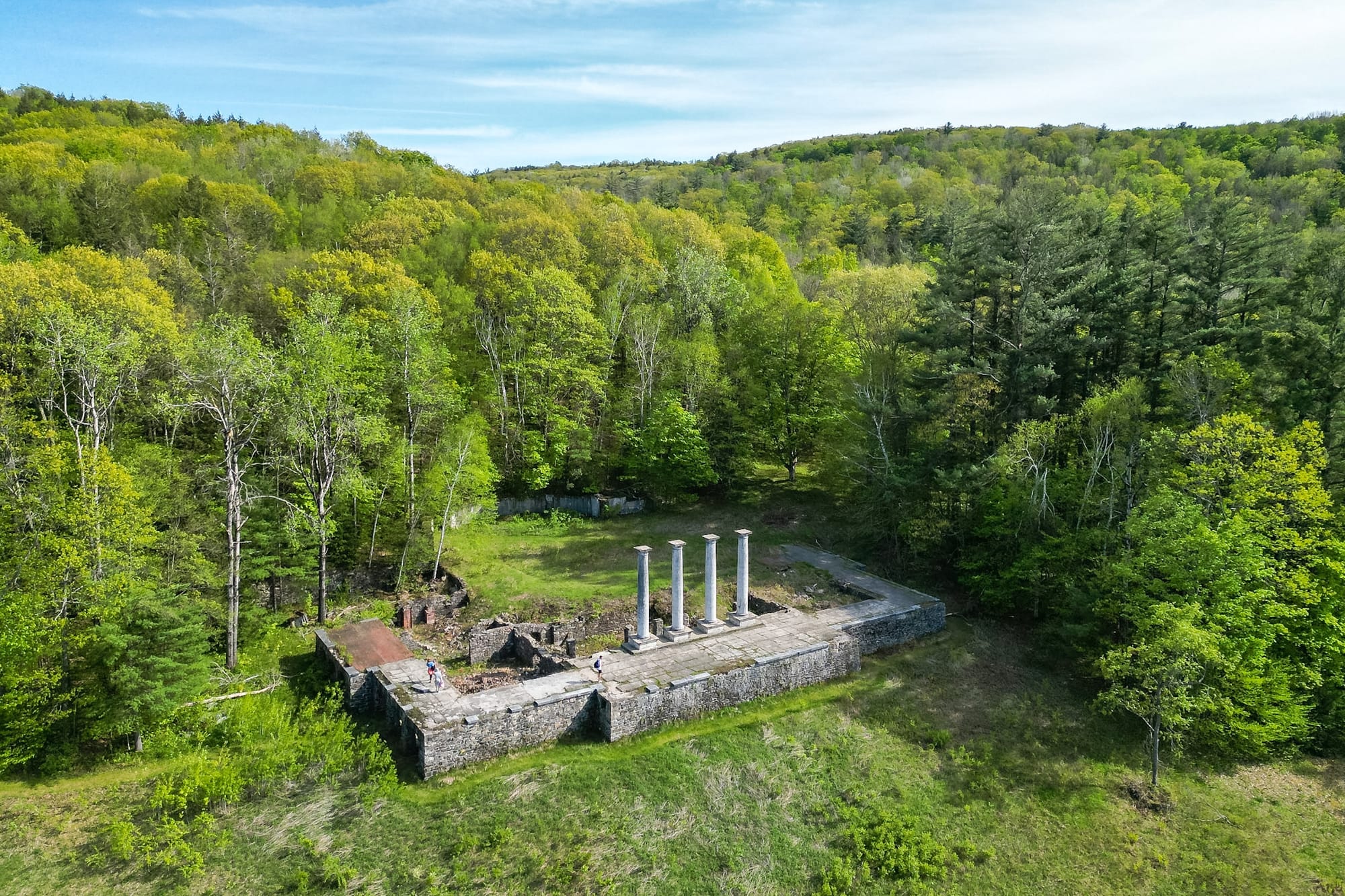
Final Thoughts
The Ashintully Mansion Ruins in Tyringham, Massachusetts capture both the elegance and impermanence of the Gilded Age. What began as a grand estate inspired by history and art has become one of the most hauntingly beautiful landmarks in the Berkshires.
Standing before the four surviving columns, visitors can still sense the grandeur that once defined Ashintully — and the resilience of nature that has since reclaimed it. It’s a place where tragedy, beauty, and history intertwine — a must-see destination for lovers of abandoned architecture and New England history alike.
